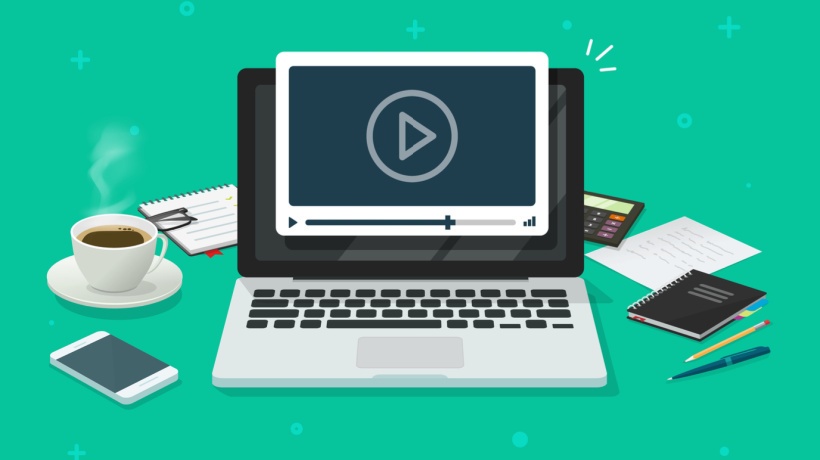Learn How To Balance Quality And Urgency When It Comes To Online Training
As we know from our experience pre-COVID-19, there are those in our organizations who enthusiastically embrace eLearning and those who find every possible reason (or excuse) to avoid it. With the onsite training option removed for the foreseeable future, at least in most locations, more people are being forced to try eLearning than ever before. Though none of us would have wished COVID-19 upon us, I, for one, am excited about the newfound, even if reluctant, openness to online learning.
A knock-on effect of this reality has meant that those of us in L&D are inundated with requests to speed up existing course development projects, create new courses that needed to be ready yesterday, train new facilitators, update systems, and much more. In trying to meet these demands with what might seem to be suddenly inadequate resources, it is difficult to maintain high-quality output, at least in terms of what we did before.
While compromises may be necessary in the short term, I wonder about the long-term consequences. In emergency or even crisis mode, it may not be popular to think long term, but it is important, as the decisions we make now will impact us and others in the future. Though we can hypothesize about many likely or unlikely consequences, positive or negative, I have a particular one in mind. Might it be possible that resistance to online learning could increase if the colleagues who were already resistant to online learning now have less than positive experiences? Could they become even more entrenched in their onsite preferences post-COVID-19? It is one thing to resist something you have never tried and quite another to resist something after an unhelpful experience.
As I reflect on this phenomenon, I wonder how we can balance the urgent demands for online training with the need for quality so that our experiences as L&D and the experiences of our online participants or facilitators can be as good as possible. I think the best way to do this is to get back to the basics, with a few extra considerations. That said, here are 4 key steps I think are essential for positive experiences all around.
1. Define Your Current Situation
- What’s essential and what’s nice to have? That is, what absolutely has to be done and what would be nice to put online, but won’t jeopardize the goal if it doesn’t happen? If you need more objectivity here, have someone review this question with you who is not closely connected to the project.
- What are your training outcomes? Do they need to be edited at all for online purposes?
- What’s your timeline? Is there any flexibility?
- What tools are available? For example, an LMS, like Moodle, Canvas, Talent, or Adobe; video conferencing platforms, such as Microsoft Teams, Zoom, or Skype; other online learning tools, such as virtual whiteboards, podcasts, or video editors. Don’t learn new tools if you don’t have to, as becoming familiar enough with them to use them well can take time you don’t have.
- Who is your audience? Are there any special considerations such as bandwidth, language, or learning difficulties? It’s possible that more people will want to participate in the training, particularly if their regular work is reduced or stopped due to COVID-19. Making the training accessible to as many as possible is important.
2. Map Your Content
Do an overview of your onsite curriculum. How might this need to be structured for online? Does one onsite session/class mean one online module or one live session? Or is it better broken up into two or more? Don’t think about specifics now. Just focus on the general outline.
A simple strategy for clarity is to list your training outcomes at the top of a page, then create a table below it with your onsite sessions on the left and your online solutions on the right. This ensures you stay aligned with what you want to achieve and don’t miss anything important in the process.
3. Determine Appropriate Equivalents
Now that you’ve determined the essentials and the general content structure for online, it’s time to consider how you can transfer onsite activities online. I’ve often said that many things are possible if we think creatively. Here are some ideas:
| Onsite | Online |
| Small or large group discussions | Discussion boards or live chats |
| Videos or readings | Embedded videos, text or infographics, links to external articles |
| Quizzes or questionnaires | Quizzes or questionnaires created in an LMS or with another tool |
| Tutorials or demonstrations | Record a video of it or do it live. You can share your screen on platforms such as Zoom or MS Teams. |
| Mentoring or coaching | Virtual mentoring or coaching via Skype, Teams, Zoom, FaceTime, etc. |
| Practice activities | Have participants do something "in real life" and then post about it on the discussion board. Or, have a live session with breakout rooms for small group practice. |
| Individual or group projects | Have participants collaborate virtually and present their content via video, narrated PowerPoint, or a website. |
| Journals | If it’s private, this could be done in a program like MS Word or OneNote. If it’s public, have participants create a blog. |
| Presentations | These could be recorded and shared in a discussion forum or done live via video conferencing. |
| Case Study | This could be the topic for a discussion forum or discussed in a live video conference. |
| Games | Is there an online equivalent? If not, is it something that you could do via video conference? |
Of course, though so much is possible online, including some things that couldn’t be done at all or easily in an onsite class, there are things that are difficult or impossible to do online. Be realistic about the opportunities and limitations of the tools you are using.
One comment I often receive is that the online environment loses the "human" element of learning. Though I agree that it is different than onsite, I am convinced that we can still create a community. For example, why not start your session or course with a "get to know you" time? You could do it live via video conference or have each participant post an introductory video in a discussion forum. Participants could share about what they do in their free time, their interests outside of work or school, and about their families. If you do video conferencing throughout your course, you could even encourage students to make a cup of tea or coffee before they join.
4. Be Okay With "Good Enough"
As a perfectionist and overachiever, this is hard to write. However, if we want to do well in managing urgent demands alongside quality training, we must be willing to consider it.
With time and other resource constraints, you may not be able to create the same courses as you used to. Perhaps you don’t need to have completely polished graphics and professionally produced videos. Maybe free graphics from Unsplash or Pixabay will do, with videos recorded on your laptop or phone. It may be that you forgo that wonderful simulation or activity because it takes half of your entire timeline to set up. Doing things "good enough" now does not mean that you cannot go back and improve it sometime in the future.
These are the 4 steps I am keeping in mind as requests for online training come to my email inbox. Are there any that you would add? Do you have any extra tips on how we can navigate well the tension between urgency and quality? Please feel free to leave a comment below.










